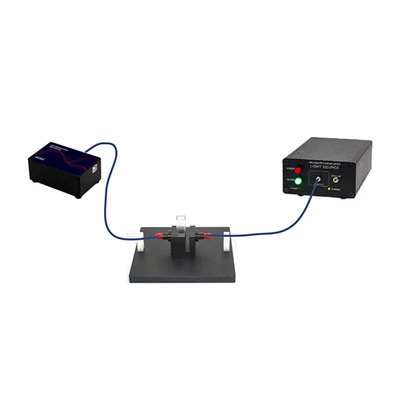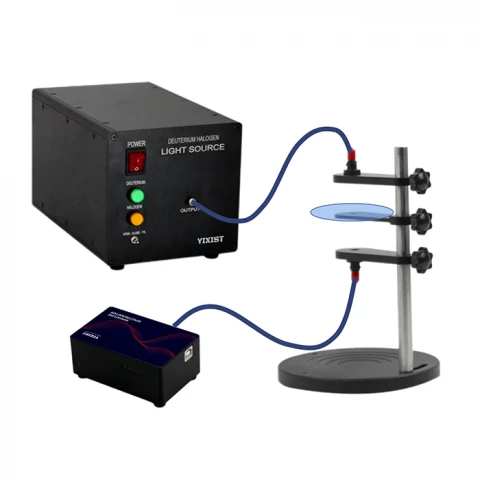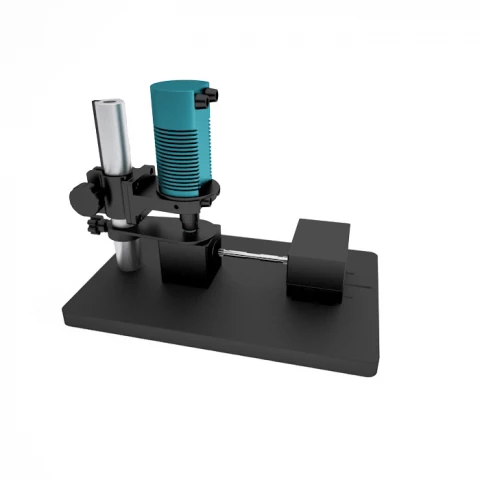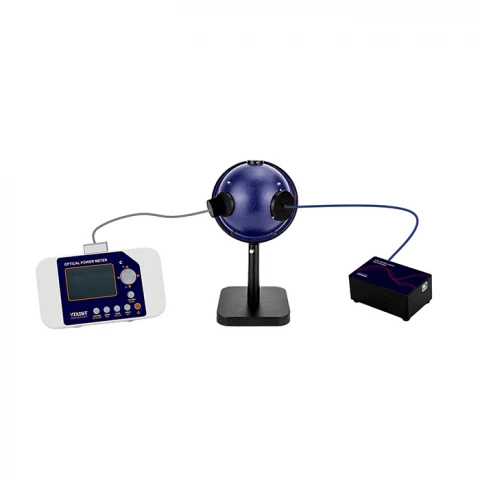Description
The Advanced Optical Measurement Kits provide a complete suite of solutions for precise spectral characterization of liquids, solids, and light sources. Designed for laboratory and industrial applications, these kits enable high-accuracy measurement of absorbance, reflectivity, transmissivity, fluorescence, and LED/laser parameters.
Absorbance kits measure the light absorption of solutions and solids, enabling quantitative concentration detection and material identification based on the Lambert-Beer law. Reflectivity kits determine surface color, diffuse, and specular reflection of flat or curved samples.
Transmissivity kits provide fast and reliable measurement of light passing through filters, lenses, and curved surfaces, supporting both horizontal, vertical, and integrating sphere configurations.
Fluorescence measurement kits capture emission spectra from liquids, solids, or powders using cuvettes, optical fibers, and integrating spheres, suitable for biochemical, gemstone, and fiber research. LED and laser measurement kits combine spectrometers, optical power meters, and integrating spheres to analyze peak wavelength, FWHM, optical power, and chromaticity parameters.
All kits feature modular design, real-time data display, high repeatability, software integration, and secondary development support, ensuring adaptability for scientific research, industrial quality control, and custom applications.
Optical Measures
Specifications
| Probe Spectral Range: | 200 – 1700 nm |
|---|---|
| Wavelength Range: | UV-VIS, VIS-NIR |
| Spectral Range: | 200-1700 nm |
| S/N Ratio: | 600:1, 800:1, 14667:1 |
| Resolution (Pre-configured): | ~2/10 nm |
| Wavelength Accuracy: | ±1, ±5 nm |
| Lamp Life: | 2000 hours (typical) |
| A/D: | 16bit |
| Stability: | ±0.5% |
| Measurement Range: | 1%-100% |
| Interface: | USB2.0 |
| Power Supply: | 15VDC,3A |
| Trigger: | Software, hardware, synchronous |
| Operating Temperature: | 5°C - 35°C (25°C recommended) |
| Operating System: | Win XP/7/8/10/11 |
Features
- High Accuracy Measurement: Delivers precise readings for absorbance, reflectivity, transmissivity, and fluorescence.
- Modular Design: Easily adaptable to different sample types, wavelengths, and detectors.
- Real-Time Data Display: Instant visualization of spectral curves, FWHM, and peak intensities.
- High Repeatability: Ensures consistent results across multiple measurements.
- Software Integration: Supports data storage, export, and secondary development with SDK.
- Wide Wavelength Coverage: Options ranging from UV-VIS to VIS-NIR and IR for comprehensive analysis.
- Flexible Sampling: Cuvette, immersion probe, optical fiber, and integrating sphere configurations available.
- LED/Laser Measurement Capability: Measures central wavelength, optical power, FWHM, chromaticity, and efficiency.
- Compact & Portable Options: Certain models offer compact designs for easy integration and field use.
Applications
- Chemical & Biochemical Analysis: Absorbance and fluorescence measurements for solution and material concentration.
- Surface and Color Analysis: Reflectivity kits for determining surface color, diffuse, and specular reflection.
- Optical Materials Testing: Transmissivity measurement of filters, lenses, and curved optical components.
- LED & Laser Characterization: Wavelength, power, FWHM, and chromaticity testing for light sources.
- Scientific Research & Education: Suitable for laboratories, universities, and industrial R&D.
- Industrial Quality Control: Ensures precise monitoring and characterization of optical components.
- Secondary Development: SDK-enabled systems for customized integration and automation.
Frequently Asked Questions
What is the purpose of absorbance measurement?
How does spectrometer detection compare to traditional experimental methods for absorbance measurement?
What is the significance of reflection measurement?
What are the two main types of reflection?
What industries commonly adopt transmissivity detection?
Your inquiry has been received.
Create an account by adding a password
Why create an account?
- Auto-complete inquiry forms
- View and manage all your past messages
- Save products to your favorites
- Close your account anytime — no hassle



